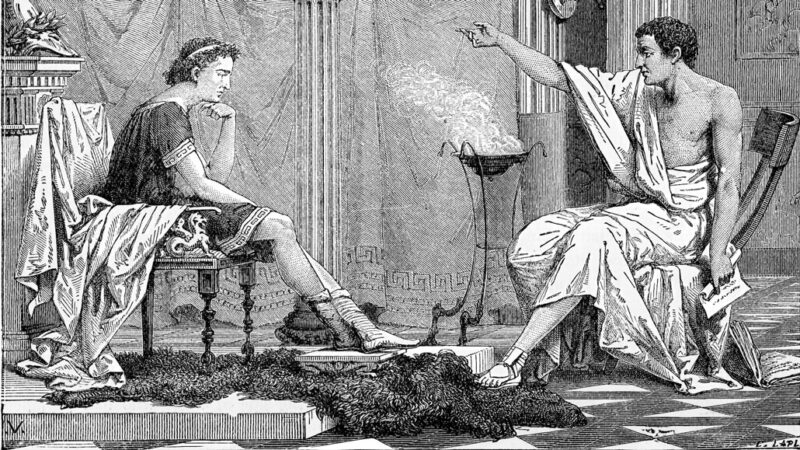Thought experiment (noun, “THAWT Ex-PAIR-eh-mint”)
A thought experiment is a hypothetical scenario addressing a big question.
The scenario can sometimes seem absurd. But considering such scenarios can highlight the consequences of a particular idea or theory.
One famous thought experiment is known as Schrödinger’s cat. Physicist Erwin Schrödinger devised it in 1935. He did this to illustrate a point about quantum theory.
Let’s learn about the quantum realm
Quantum theory attempts to describe physics at the tiniest scale. One aspect of quantum theory is a concept known as superposition. Superposition says that particles can exist in different states at the same time. Quantum theory also says that when these particles interact, they adopt just one state.
But many scientists took this a step further. They said that just observing such a particle caused it to pick a state. Schrödinger found that idea ridiculous. So, he came up with a thought experiment.
His scenario describes a box with a cat inside. This box connects to a single atom. This atom represents the superposition idea. The atom has a chance of decaying. That means the atom has two potential states: decayed and undecayed.
The cat’s fate is bound to the atom in this thought experiment. If the atom randomly changes state from undecayed to decayed, then poison “kills” the imaginary cat — Schrödinger’s cat, as it came to be known.
And here’s the important part. In this scenario, the cat, box and atom are all unobserved. With no observer, that atom would hypothetically be in a state of superposition. It would be both decayed and undecayed at the same time. But the cat’s life is linked to this atom’s state. So, if the atom exists in two states, so does the cat. The cat is both alive and dead. And its state — dead or alive — would only be determined if someone observed the cat or the atom.
That, Schrödinger pointed out, is absurd. But it doesn’t mean quantum theory is flawed. In fact, this thought experiment has become a helpful device for understanding the absurd nature of subatomic particles.
Thought experiments are not limited to science. Other fields, such as philosophy, history and economics use them, too. Thought experiments help us reconsider information we already know. But they can also help propose new ways of thinking through and discussing complex questions.
In a sentence
Thought experiments help to illustrate the quantum mechanics principle of superposition.
Check out the full list of Scientists Say.




